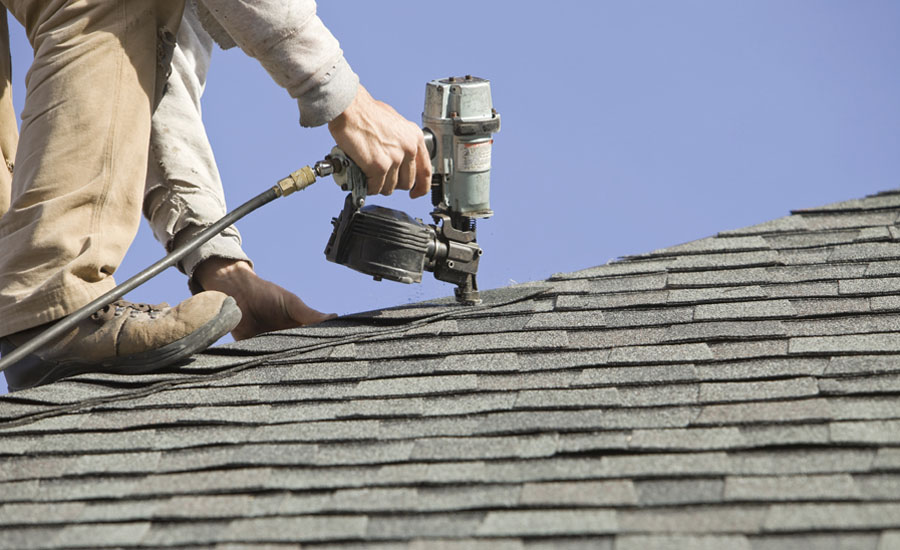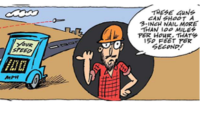Nailing down nail gun safety

Photo credit: Getty Images
They’re powerful, easy to operate and allow workers to perform tasks taster. They’re also a leading cause of injury among residential carpenters. Of the 37,000 emergency room visits each year related to nail gun injuries, 60% are occupationally-related.
While puncture wounds to the hands and fingers are the most common, nail guns are also responsible for more serious injuries – and even fatalities.
All nail guns have the potential to cause serious injury. Using a nail gun with a bump or automatic trigger (also known as contact trip trigger) can result in unintended nail discharge. Other risks include lack of training, working fast and keeping the trigger squeezed when not nailing. Using a nail gun with a single shot or full sequential trigger reduces the risk of injury.
What can you do to help prevent nail gun injuries?
Employers can take several steps to prevent nail gun injuries, including:
- Use full sequential trigger nail guns
- Provide training
- Establish nail gun work procedures
- Provide personal protective equipment (PPE)
- Encourage reporting and discussion of injuries and close calls
To learn more, refer to Nail Gun Safety: A Guide for Construction Contractors .
If a nail gun injury occurs, workers should seek medical attention immediately, even for hand injuries that appear to be minimal. Employers should be prepared to provide first aid and medical treatment immediately.
Resources
Here are some National Institute for Occupational Safety and Health Resources for you:
- Straight Talk About Nail Gun Safety
- NIOSH Publication No. 2013-149 (2013)
- The information in this unique comic format is based on NIOSH supported research, Nail Gun Safety: A Guide for Construction Contractors and focus group discussions with residential building subcontractors, safety specialists and workers.
- en Español
- Nail Gun Safety: A Guide for Construction Contractors
- NIOSH Publication No. 2011-202 (2011)/OSHA Publication No. 3459-8-11
- This publication was developed by the National Institute of Occupational Safety and Health (NIOSH) and the Occupational Safety and Health Administration (OSHA)External and strives to help prevent nail gun injuries and keep construction workers and consumers safe.
- en Español
Related articles:
- Revisiting Pneumatic Nail Gun Trigger Recommendations
- Serious injury and fatality investigations involving pneumatic nail guns, 1985-2012
- A biomechanical assessment of hand/arm force with pneumatic nail gun actuation systems
- Finger tendon travel associated with sequential trigger nail gun use
- Residential Building Stakeholders: Attitudes and Beliefs Regarding Nail-Gun Injury Risks and Prevention
- Nailing Down the Need for Nail Gun Safety: CDC Feature Story
- Nail Gun Safety – Occupational Safety & Health Administration
- Nail Gun Safety: The Facts
- Nail-gun injuries treated in emergency departments-United States, 2001-2005 MMWR, April 13, 2007/56(14):329-332
- Jayakumar V et al. Design and Evaluation of Noise Control Measures for a Pneumatic Nail Gun. Proceedings of NOISE-CON 2013, Denver August 26-28 2013
Looking for a reprint of this article?
From high-res PDFs to custom plaques, order your copy today!







.jpg?t=1721257160)